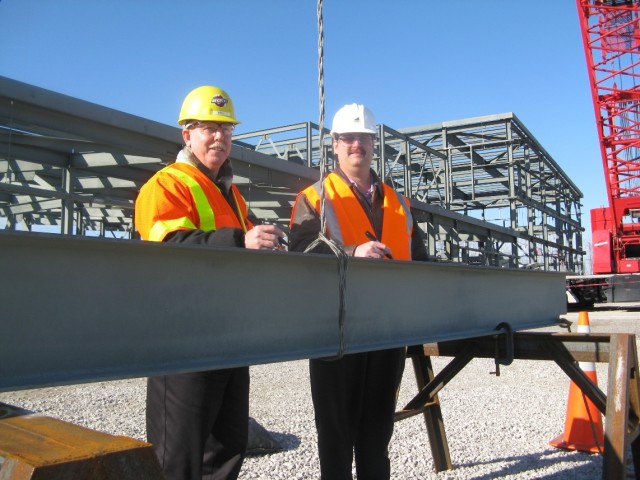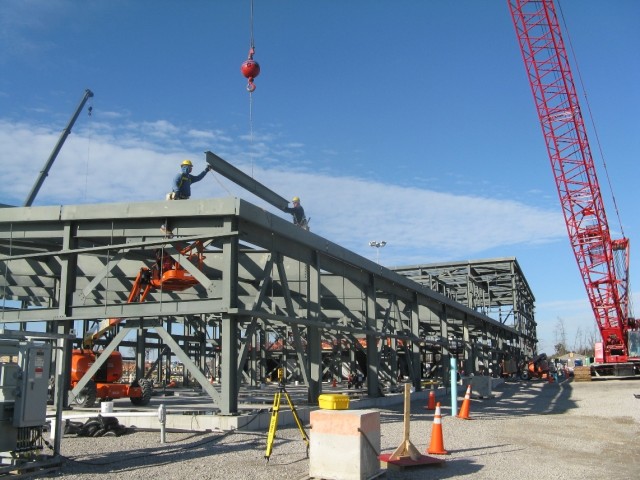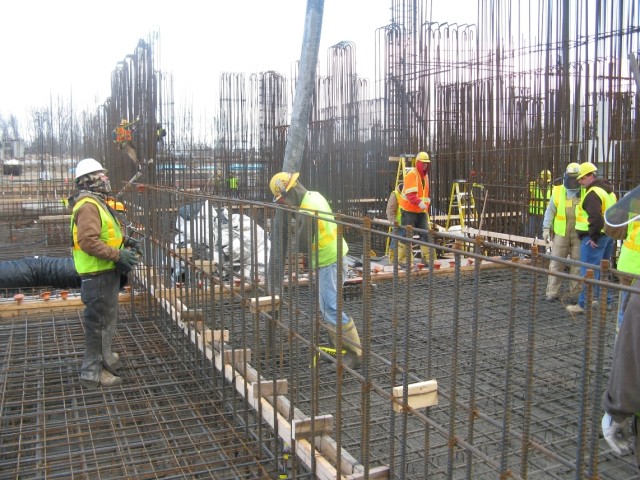BLUE GRASS ARMY DEPOT, Ky. - The Blue Grass Chemical Agent-Destruction Pilot Plant (BGCAPP) team reached two significant milestones in January with the installation of the final structural steel beam on a key support facility and the first concrete placement in the main processing building of the chemical weapons destruction pilot plant.
"Since construction began on the Blue Grass destruction facility, our team has celebrated progress each step of the way, but accomplishing these two milestones on two of the main processing facilities signifies to our team and the community that we are getting closer to ridding Madison County of the chemical weapons stockpile," said Jeff Brubaker, BGCAPP site project manager. "More important than this achievement is that our workforce continues to work safely while making significant progress. The team has worked 2,436 days and 4.9 million hours without a lost-time injury."
The structural steel erection on the Control and Support Building began in September 2009 and was completed on Jan. 27. The building will house the control room and other support facilities for the destruction plant, measuring 37,000 square feet and 44 feet high. Craft workers will now begin focusing on the installation of the exterior walls.
On Jan. 28, construction team members placed the first concrete in the explosives containment area of the Munitions Demilitarization Building, known as the MDB, which is where weapons will be destroyed. This area of the building is constructed with specially designed, heavily reinforced concrete walls to contain an unlikely explosion during plant operations. The MDB will take the longest to construct due to the complexity of the design.
Additional work in progress at the MDB includes the installation of reinforcing steel for future concrete placements and preparations to erect structural steel. Over the next several weeks, work crews will also begin assembling the Metal Parts Treater, the first piece of processing equipment to be installed there.
The chemical weapons destruction plant, under construction at a site on the Blue Grass Army Depot near Richmond, Ky., will destroy a stockpile of chemical weapons containing 523 tons of nerve and mustard agents. For more information on the project, please visit the ACWA Web site at www.pmacwa.army.mil.
###






Social Sharing